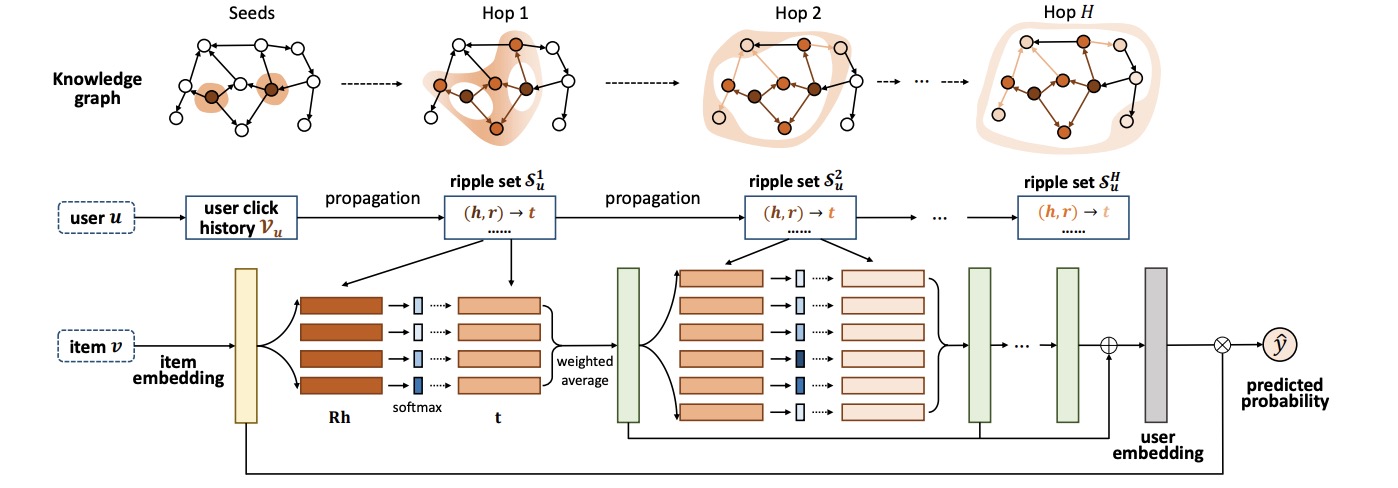RippleNet¶
Introduction¶
Title: RippleNet: Propagating User Preferences on the Knowledge Graph for Recommender Systems
Authors: Hongwei Wang, Fuzheng Zhang, Jialin Wang, Miao Zhao, Wenjie Li, Xing Xie, Minyi Guo
Abstract: To address the sparsity and cold start problem of collaborative filtering, researchers usually make use of side information, such as social networks or item attributes, to improve recommendation performance. This paper considers the knowledge graph as the source of side information. To address the limitations of existing embedding-based and path-based methods for knowledge-graph-aware recommendation, we propose RippleNet, an end-to-end framework that naturally incorporates the knowledge graph into recommender systems. Similar to actual ripples propagating on the water, RippleNet stimulates the propagation of user preferences over the set of knowledge entities by automatically and iteratively extending a user’s potential interests along links in the knowledge graph. The multiple “ripples” activated by a user’s historically clicked items are thus superposed to form the preference distribution of the user with respect to a candidate item, which could be used for predicting the final clicking probability. Through extensive experiments on real-world datasets, we demonstrate that RippleNet achieves substantial gains in a variety of scenarios, including movie, book and news recommendation, over several state-of-the-art baselines.

Running with RecBole¶
Model Hyper-Parameters:
embedding_size (int): The embedding size of users, items and entities. Defaults to64.n_hop (int): The number of hop reasoning for knowledge base. Defaults to2.n_memory (int): The number of memory size of every hop. Defaults to16.reg_weight (float): The L2 regularization weight. Defaults to1e-07,kg_weight (float): The kg loss weight. Defaults to0.01.
A Running Example:
Write the following code to a python file, such as run.py
from recbole.quick_start import run_recbole
run_recbole(model='RippleNet', dataset='ml-100k')
And then:
python run.py
Tuning Hyper Parameters¶
If you want to use HyperTuning to tune hyper parameters of this model, you can copy the following settings and name it as hyper.test.
learning_rate choice [0.01,0.005,0.001,0.0005,0.0001]
n_memory choice [4, 8. 16. 32]
train_neg_sample_args choice [{'uniform':1}, {'uniform':2}, {'uniform':5}, {'uniform':10}]
Note that we just provide these hyper parameter ranges for reference only, and we can not guarantee that they are the optimal range of this model.
Then, with the source code of RecBole (you can download it from GitHub), you can run the run_hyper.py to tuning:
python run_hyper.py --model=[model_name] --dataset=[dataset_name] --config_files=[config_files_path] --params_file=hyper.test
For more details about Parameter Tuning, refer to Parameter Tuning.
If you want to change parameters, dataset or evaluation settings, take a look at